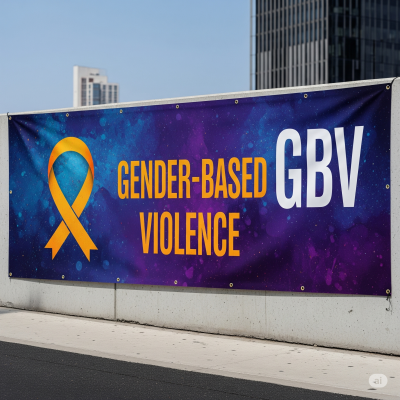Background
The indisputable role of social and economic empowerment as a foundation for sustainable development is well established, given the recognized costs associated with the disempowerment and marginalization of certain groups. As global awareness grows regarding the imperative to avoid leaving any segment of society behind—both socially and economically—there has been a significant evolution in policies and regulations that shape interpersonal interactions in social contexts and the allocation of economic opportunities. This progress is commendable, as it promotes inclusivity and ensures broader participation.
The contemporary emphasis on empowering historically disenfranchised groups, like youths, women, people of color and persons with disabilities (PLWDs), is supported by robust empirical evidence demonstrating that inclusive policies generate a multiplier effect, advancing societal progress through enhanced productivity, job creation, and shared prosperity. This rationale is grounded in economic benefits, including an expanded labor pool and elevated overall productivity. Data from the International Monetary Fund (IMF) and World Bank indicate that rising productivity correlates with wage increases, thereby reinforcing support for further inclusive measures. The advantages of such empowerment are substantial: projections suggest that closing existing gender gaps in employment and productivity could boost global output by USD 7 trillion. Similarly, forecasts indicate that eliminating gender disparities in the labor force could generate an additional 10.5 million jobs in the European Union by 2050, with 70% of these opportunities benefiting women.
Amid the growing prevalence of diverse workplaces, many organizations—particularly in OECD countries—have expanded their boards or incorporated women and minority groups without experiencing net reductions in positions. However, evidence suggests that quotas may compel firms to prioritize candidates from marginalized groups, potentially displacing individuals from majority demographics, like men and those from non minority backgrounds. A pertinent example is California's 2018 gender quota law (Senate Bill 826), which mandated that publicly traded companies headquartered in the state appoint at least one female director by 2019. To achieve compliance, companies often added female directors, which coincided with increased male director turnover. Statistical analysis reveals that for firms requiring one additional female director, male turnover rose by 2.6% (statistically significant at p < 0.05); for those needing three, the increase was 2.9% (p < 0.01). In 52% of non compliant firms that appointed women, the turnover targeted the male director with the least shareholder support. Although such substitutions occasionally proved suboptimal—yielding announcement returns of 0.8% to 2.6% when underperforming males were retained while higher supported ones were replaced—this pattern indicates that claims of reverse discrimination are unfounded. Instead, where substitutions occur, they typically involve the removal of underperformers, ultimately enhancing long term organizational quality. We collected other statistics that should come into the picture when we are talking about empowerment, especially women empowerment.
| # | Statistic |
|---|---|
| 1 | The degree to which gender gap was closed in the labour market globally by 2024 |
| 2 | The projected potential global GDP increase that could be achieved by closing workforce gaps between women and men |
| 3 | The projected potential increase in GDP per capita that EU can achieve by 2050 if gender gaps are closed in the workplace. |
| 4 | The potential increase in GDP in developing countries and emerging markets that can be attained by filling the labor market gender gaps |
| 5 | The maximum increase in GDP in developing countries and emerging markets that can be attained if the labor market gender gap is fully closed |
| 6 | The potential average GDP boost that the countries with the widest gender inequalities can achieve by filling the labor market gaps. |
| 7 | The potential global GDP per capita rise due to gender gap closure in the labor market, and the subsequent men’s job market stabilization, reduced poverty and enhanced cohesion |
| 8 | The proportion of people who believe that it is natural for men to earn more than women in a survey conducted in 20 countries |
Problem
The critical importance of full participation by minorities and marginalized groups—such as women, youth, people of color, and persons with disabilities (PLWDs)—in fostering a more prosperous and equitable global society is undeniable. Their inclusion drives economic diversification, spurs innovation, and accelerates growth, creating additional employment opportunities and resources accessible to all, including those already holding economic advantages, without necessitating direct competition. Empirical evidence underscores that workforce diversity enhances skill complementarity, with men and women bringing distinct attributes—such as varied approaches to risk and collaboration—that elevate team effectiveness and generate broader benefits, including improved organizational performance. Far from involving trade offs, empowerment initiatives, such as increasing women's participation in the labor force, foster complementarity rather than competition. However, HypoSTAT Research Limited refers to DEI implementation, especially women empowerment to highlights persistent gaps in this discourse, identifying several areas warranting thorough examination to further advance inclusive policies and practices.
- How do we interpret and execute the concepts of marginalization and empowerment?
- Are we grabbing of privileges from one group to give them to another group in a forceful manner?
- If that is the case, how can we escape the potential of it being viewed as reverse disempowerment?
- What should be the universal yardstick for achieving equity and equality in opportunity access when empowerment is seen as competition between discrimination and reverse discrimination?
- What measures should be taken to minimize the potential backlash in the future, amidst the hidden negative empowerment views that stand to return us to the drawing board?
Note: This subject requires application of reason, rather than emotion for objective analysis.
Empirical Evidence on Potential Backlash Against Women Empowerment
The empowerment of marginalized groups, including women, children, youth, and persons living with disabilities, plays a pivotal role in alleviating suffering while enhancing their social, economic, political, and cultural participation. However, concerns have been raised that inclusivity initiatives, such as Diversity, Equity, and Inclusion (DEI) programs, may inadvertently contribute to reverse discrimination. HypoSTAT Research Limited underscores the importance of relying on empirical data to inform perspectives on this issue. Like now, we don’t have conclusive evidence demonstrating that women’s empowerment systematically displaces men in professional settings lack substantiation. To buttress this argument, we summarize the findings of contemporary empirical studies. The table below displays some of these findings.
| Year | Study | Finding/ Sentiment |
|---|---|---|
| 2020 | McKinsey survey (USA) | In regions where gender quotas were mandatory, there was a 31% male employee backlash, including fears of promotion displacement |
| 2024 | Workplace Review (S. Korea) | Men perceive gender diversity initiatives like family friendly policies as promotion threats. Only 2.4% of men took paternity leave in 2011 due to potential career turnover fears |
| 2019 | A study on 134 countries | In 91 countries (68%), men were more disadvantaged than women in certain metrics, partly due to policies like affirmative action that overlook male vulnerabilities. The study criticized Global Gender Gap for under researching male discrimination |
| 2023 | A 1976 to 2020 meta study of 361,645 job applications | There was a stable selection bias against men in female typed jobs. However, bias against women in male typed jobs reversed marginally after 2009 with the increasing popularity of workplace diversity initiatives |
| 2025 | Pew Research Survey (USA) | Only 38% of white Americans reported personal discrimination in the past year, compared to 54% of Black Americans and 50% of Latinos |
Advocates Concerns on Current DEI Practices
Advocates for women’s empowerment have raised concerns regarding the perception of affirmative action initiatives, which aim to promote equity and equality, as discriminatory toward majority group members. A 2024 analysis by Constangy Brooks highlights a significant increase in "reverse" discrimination claims from majority groups, such as white males, attributed to Diversity, Equity, and Inclusion (DEI) policies that prioritize diversity without adequate safeguards. Additional reports on hiring biases, promotions, and job terminations further corroborate these concerns. To gain a comprehensive understanding, it is essential to examine the findings of the most recent studies addressing this issue.
| Author/ Source | Concern/ Criticism |
|---|---|
| Sowell (2004) | Argued that affirmative action often benefits already privileged minorities while harming disadvantaged groups, including poor white males. |
| Kaufmann (2019) | Warned that excessive focus on identity politics may fuel division and resentment, particularly among majority groups. |
| Williams (2022) | Criticized DEI training programs for lacking measurable outcomes and sometimes reinforcing stereotypes rather than dismantling them. |
| Haque (2023) | Observed that DEI programs risk creating perceptions of favoritism, leading to morale issues and backlash from non targeted groups. |
Evidence on Lawsuits and Backlash
Recent labor related lawsuits provide evidence that a significant number of individuals perceive inclusivity and empowerment initiatives, such as those promoting women’s empowerment under Diversity, Equity, and Inclusion (DEI) frameworks, as potential avenues for reverse discrimination. These cases reinforce the view that, when applied rigidly, empowerment objectives may be interpreted as reverse discriminatory, leading to backlash and risking the erosion of progress made toward fostering global inclusivity and empowerment.
| Case/ Year | Details |
|---|---|
| Ricci v. DeStefano (2009, USA) | A group of white firefighters sued the city of New Haven for discarding promotion exam results because not enough minorities scored well. The Supreme Court ruled in favor of the plaintiffs, finding discrimination against them. |
| Allan Bakke v. Regents of the University of California (1978, USA) | A white applicant sued UC Davis Medical School for reserving seats for minority applicants. The Supreme Court struck down racial quotas but allowed race to be considered as one factor in admissions. |
| Smith v. City of Jackson (2005, USA) | Older police officers sued, alleging that a pay plan favoring younger officers constituted age discrimination. The Court recognized "disparate impact" claims under the Age Discrimination in Employment Act. |
Summary of Findings
These cases serve as clear evidence that empowerment initiatives that do not follow the appropriate procedures, like those which overemphasizing historical exclusion in the award of opportunities can inflate negative sentiments and perpetuate social inefficiencies and tensions. With the outcomes of these lawsuits as examples of backlash, it is clear that some people, though not showing it explicitly, may feel hurt by the empowerment initiatives, especially when they are on the receiving end of opportunity loss to empower someone that is perceived to be marginalized. The negative views and backlashes may not end if we sustain the push and pull component cycle to reap the fruits of bridging gender gaps to the maximum.
A Summary of our Observations
The prominence of social, economic, cultural and social empowerment as a critical subject across educational institutions, workplaces, and broader society underscores a collective acknowledgment of the harm perpetuated by traditional patriarchal systems. Addressing these issues requires approaches that advance societal progress without inadvertently reversing discrimination by targeting other groups. Striking a balance in empowering marginalized communities like women, youth, and persons with disabilities without systematically disadvantaging others is essential to garnering widespread societal support. That we already have lawsuits that have led to millions of dollars in discrimination linked compensation justifies the argument that missteps in implementing empowerment and inclusivity initiatives risk triggering backlash, which could undermine the progress made so far.
For those who have experienced marginalization, questions may arise: Is this critique suggesting that empowerment efforts are misguided? The answer is unequivocally no. HypoSTAT Research Limited firmly supports all forms of women’s empowerment and inclusion. However, we advocate for a critical examination of the methods employed in these initiatives. As an illustration, mandatory gender quotas in workplaces can inadvertently foster perceptions of favoritism toward women and people of color at the expense of men and non minority groups?]. These concerns, though often unspoken due to fear of backlash, demand open and objective dialogue. As a mater of fact, with the current statistics showing that a significant number of men feel discriminated when these initiatives are applied, how long can we avoid these critical conversations? Should we wait until the subject triggers a full blown opposition to think?
Final Remarks
The empowerment of marginalized groups is a vital and commendable pursuit that societies worldwide must champion. However, concerns that the process may inadvertently disadvantage historically non marginalized groups, fostering perceptions of reverse discrimination must be addressed. The potential impact of these anti empowerment sentiments, based on the current trajectory remain uncertain. At the same time, they underscore a delicate boundary between genuine empowerment, like the popular women’s empowerment initiatives that could be interpreted as discriminatory. When efforts to advance social transformation, like promoting gender equity, provoke significant backlash due to perceived unfairness, the entire process risks being undermined. Achieving consensus among stakeholders is challenging when clarity on what constitutes meaningful transformation is lacking.
Social and economic empowerment is a cornerstone of human progress, but it must be pursued inclusively to avoid replicating the exclusionary dynamics we seek to eliminate. If empowerment initiatives for women, persons with disabilities, or other marginalized groups are seen as diminishing the prospects of others, they risk fueling resentment and eroding the principles of equity and equality. Ignoring the fine line between addressing historical marginalization and creating new forms of exclusion could inadvertently perpetuate a zero sum dynamic, where one group’s gain is another’s loss. Such an outcome would undermine the transformative potential of inclusivity, potentially intensifying backlash and necessitating a return to foundational principles. To ensure lasting progress, empowerment must uplift all members of society equitably, fostering a shared commitment to a fair and inclusive future.
To foster sustainable empowerment, economic systems must strike a careful balance, ensuring that efforts to include and uplift those previously denied opportunities do not inadvertently disadvantage others. While addressing historical inequities, such as those rooted in patriarchal structures, it is critical to avoid creating new disparities by denying individuals opportunities they are qualified for, simply to correct past imbalances. Such actions can lead to resentment and social fragmentation, undermining the broader goals of inclusivity. Empirical research highlights that poorly executed empowerment initiatives may yield suboptimal outcomes, including reduced organizational efficiency and societal cohesion. A balanced approach ensures that no group feels inherently victimized or entitled, fostering universal support for inclusivity initiatives.
At HypoSTAT Research Limited, we advocate for a balanced approach to empowerment that maximizes societal benefits while minimizing division. Rather than redistributing opportunities in a zero sum manner—diminishing one group to uplift another—society should focus on ensuring equitable access to opportunities for all, based on merit and irrespective of gender, disability, or other characteristics. This approach mitigates resentment, inefficiency, and suboptimal economic outcomes often associated with the patriarchal systems we aim to dismantle. A fair society should prioritize removing barriers to social and economic advancement for everyone, without suppressing the opportunities of any group. Notably, not all members of historically advantaged groups benefit from systemic biases, and policies should reflect this nuance to avoid unfairly penalizing individuals.




